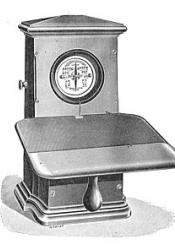Invention of the Telegraph
The invention of the telegraph could not have occured without the contributions of William F. Cooke and Charles Wheatstone, which included developments in railway signaling and message transmission in the 1830s. Additionally, the creation of the telegraph became possible through Samuel Morse’s invention of the Morse Code in 1838. The contributions of these inventors created a device, which sent signals over a cable network between two points using electro-magnetic impulses. By the late 1840s, telegraph companies, which were privately owned, began to work with news agents. Content was delivered quickly and efficiently. Hence, the sense of time was altered with the introduction of the telegraph into society. This contributed to the fast-paced dissemination of news, periodicals, and casual messages to family and friends who lived abroad.
Europe and the United States became linked by their first telegraph connection in 1866. While Australia and Britain were connected in 1872 by having the telegraph connection pass through India. In Britain the Post Office took over the telegraph network system from privately owned companies, making the telegraph nationalized in 1870. However, the international cables were still privately operated.
Sources: "The Telegraph." C19: The Nineteenth Century Index. Retreived from http://c19index.chadwyck.com.ezproxy.lib.ryerson.ca/fullrec/fullrec.do?i...
Beetham, M. (2015). "Time: Periodicals and the Time of the Now." Victorian Periodicals Review. 48.3: 323-342.

